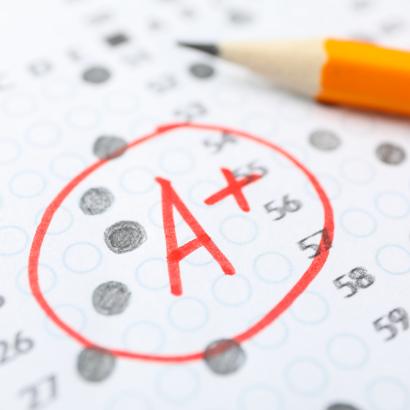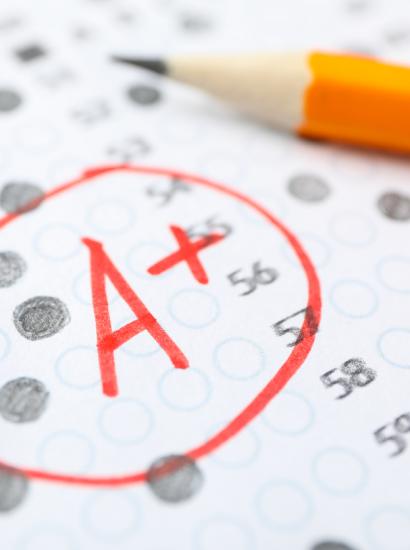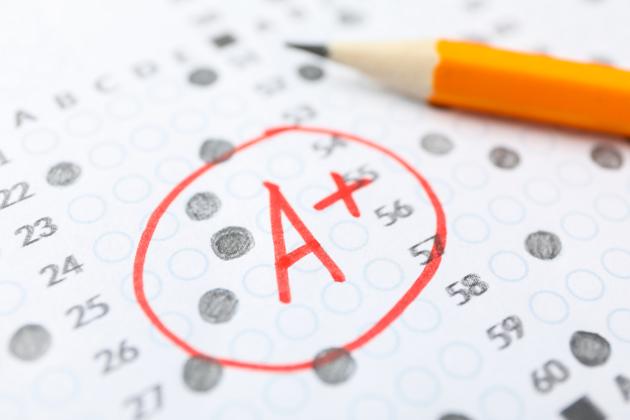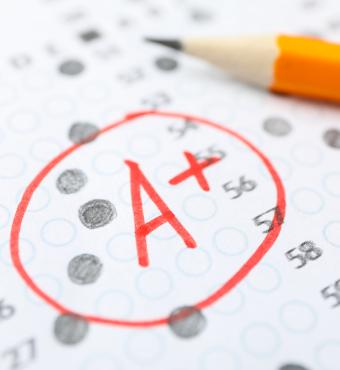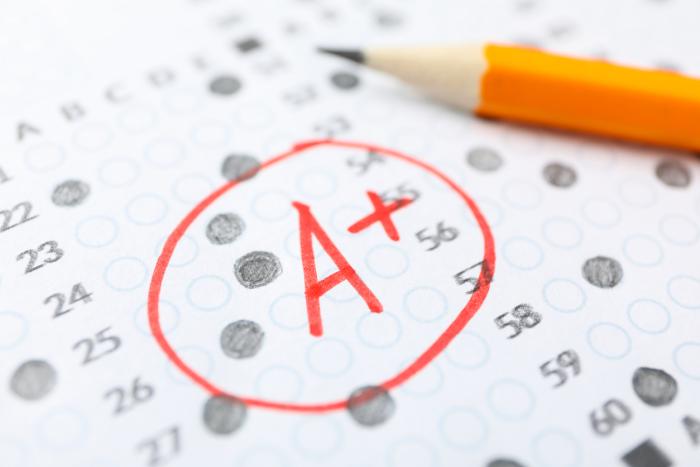This interview focuses on a chapter from A Nation at Risk +40, a report by the Hoover Education Success Initiative (HESI) that looks back at the birth, struggles, and future of the modern school reform movement. (Download the publication here and Mike Petrilli’s contribution here.)
Mike Petrilli, a Hoover visiting fellow, executive editor of Education Next, and president of the Thomas B. Fordham Institute, reflects on the lessons of “standards-based reform,” the strategy that dominated education policy starting in the 1990s. He spoke with Chris Herhalt about the erosion of test-based accountability measures in many US schools from the 2010s onward, and how to raise student achievement after COVID-19.
Chris Herhalt: Does test-based accountability need to come back to get kids’ math and reading scores climbing again? If so, should it take a different form than during the days of No Child Left Behind?
Mike Petrilli: What we need now is a both/and approach. We need to do some of the things we were doing before the pandemic and after No Child Left Behind, such as paying a lot more attention to the curriculum that schools are using, providing a lot more support to districts when choosing the curriculum—helping their teachers learn how to use it and implement it. And we also need to get back to the accountability that we had during No Child Left Behind, which we have largely abandoned.
We began abandoning it toward the end of the Obama administration when regulatory changes started being made to No Child Left Behind, and then fully once Congress replaced No Child Left Behind with the Every Student Succeeds Act. That reduced the amount of real accountability dramatically. It did not reduce the testing. Kids are still taking those reading and math tests every year—in grades three through eight and once in high school—but what has changed is that there’s not much meaningful pressure on schools anymore to perform. I do think that is part of the reason why schools made some really bad decisions during the pandemic and why they have not made as much progress coming out of the pandemic as we would like.
Herhalt: Given that the COVID-19 school closures reportedly erased decades of gains in core subjects, what do you recommend districts and states do to rebound?
Petrilli: If you’re focused on the school level, let’s talk about what educational practitioners should be doing. I think this is pretty clear and widely acknowledged. We need to provide kids with more time and more intense learning opportunities to make up for the time that they lost. That means high-dosage tutoring done well, usually during the school day, in small groups several times a week. It means extending the school year, or at least having some effective and fun summer programs for the kids who need it most and making them show up to those programs. It means addressing the chronic absenteeism crisis and getting kids to show up to school every day. It means continuing some of the reforms that started before the pandemic, like adoption of high-quality curriculum and helping teachers learn how to use them, especially in the science of reading in the early grades. This is all nuts-and-bolts stuff.
The question for policy makers, especially at the state level, is how to make all of this more likely. This has always been the challenge in education, as in other policy domains, but especially in K–12 education, where the real decisions are made locally. The states provide a lot of money, and they try through policy to have an impact on what happens locally, but the system’s a “loosely coupled train.” The states try to pull out of the station as the engine and they look behind them and the rest of the train is still on the tracks.
The policy challenge is how to get local school districts to do some of these things that either they don’t want to do—because they’d rather spend the money on something else, or because it’s hard, or it’s complicated—or, if they do want to do it, how to get them to do it well. That comes back to two pieces: support—providing expertise, knowledge, know-how, help with improvement plans—but also pressure.
Local school districts are political creatures. They report to their local school boards, who are elected by the public and often are captured by the teachers’ unions and other interest groups, so districts aren’t always focused on what’s best for kids. They’re focused on trying to keep the school board members happy. Those two things don’t always line up, so state policy makers need to try to shift the politics and shift the incentives, putting pressure on schools, and making bad things happen to the adults in the system if kids don’t learn more.
Herhalt: You describe how accountability fell out of favor in the 2010s. What was the main reason for this? Was it pushback from teachers’ unions?
Petrilli: The unions played a huge role. There’s no doubt that they have been opposed to accountability in education forever, and that they have a lot of clout. Parents trust their kids’ teachers, and the unions are hugely powerful within the Democratic coalition, so I think that was a big factor. It wasn’t the only one, but I think when they started to make progress in fighting test-based accountability, it was at the very moment that the Obama administration and some philanthropists were trying to tie test scores to teacher evaluations. Once it went from something that might have consequences for schools or principals to something that could have direct consequences for individual teachers, that is where they drew a line in the sand.
That reform didn’t go well; there were a lot of pieces wrong with it. It was not hard for teachers’ unions to make the case to parents and the public that it was a really bad idea. They were able not only to tear down the teacher-evaluation systems but also to push back on testing writ large. The result is where we are now, where there’s not much accountability left at the school level. There’s almost none at the individual teacher level.
Herhalt: Why do you think evaluations of large-scale voucher programs have found that pupils using them lag behind pupils in traditional public schools in test score growth—yet they have better rates of high school graduation and admission to four-year colleges?
Petrilli: The research now indicates that public charter schools outperform traditional public schools, whereas the kids going to the private schools via vouchers are underperforming the peers in traditional public schools. It’s the contrast between the charter schools and the voucher programs that I think is important.
In charter-school land, there’s testing and accountability. Schools can close if they don’t perform. There’s also a gatekeeper role, a quality-control role at the front end determining whether schools have a good enough plan to open in the first place. Without those kinds of quality-control mechanisms in school voucher programs, we see lower performance. That’s important—it offers another piece of evidence that testing and accountability as quality-control measures can make a difference.
Now, some of the supporters of private school choice will point out that whereas the test scores haven’t been looking very good recently, we still see gains in terms of students graduating and going to college. That’s good. It may be the case that that’s what really matters—that it’s because the schools aren’t obsessed with tests in the same way traditional public schools are, and so what matters are those longer-term outcomes.
I would say it gets a little complicated. High school graduation, for example, is largely under the control of the schools whose effectiveness we’re measuring. So, maybe it’s good news that a private high school gets voucher students to graduation, but maybe it means they have lower graduation standards. I’d be more convinced if we can see some stronger results in terms of college completion.
I think we can say that test scores, as imperfect as they are, measure important knowledge and skills. They matter. Most studies also find that test-score gains, whether in preschool or charter schools or anything else, will fade over time, at least to some degree, so you have to stack reforms on top of each other. You’re better off if you go to a KIPP [Knowledge is Power Program] middle school and high school and get support through college than if you just go to a KIPP middle school. If you care about keeping progress going, you have to do all these things. But even if the test-score gains fade somewhat, something has happened to give that child stronger knowledge and skills, which show up on other measures.
Herhalt: Can you have a major systemic effort to improve curriculum, teacher quality, and infrastructure alongside some form of test-based accountability?
Petrilli: This is where I offer a bit of a mea culpa. I and my mentor, Chester Finn, and other people who have been around this debate a long time used to argue that it would be problematic. Imagine you are the state. If you told school districts exactly what to do and they did it, and they followed your advice and said, “OK, we adopted the curriculum you told us to adopt,” then how could you come back and say, “Well, now I’m going to close you for low performance”? They might respond, “But we did everything you asked us to do.”
Instead, we preferred a model that said, “All right, we’re going to hold you accountable, but we’re going to give you lots of autonomy, lots of freedom. You make your own decisions and then we’ll judge you based on the results.” In the end, I think, we were naive about how local school districts operate. Even if the state tries to give them more flexibility and puts pressure on them, that doesn’t mean they’re going to make good decisions for kids because they’re facing all these other cross-pressures at the same time.
So, yes, I think we can have both accountability and capacity building. There may be some cases where schools are frustrated because they’re following the advice of state officials and still facing tough consequences if it doesn’t work. But I think that’s a better strategy for these school districts, most of which are very small and just don’t have a whole lot of capacity or expertise. You say, “If the state can provide more guidance, especially around the core issues—curriculum’s probably the most important one—then we should do that. And we shouldn’t be afraid to close down low-performing schools after years and years where they failed to turn around.”
Herhalt: How can school systems avoid “teaching to the test,” devouring valuable instructional time, and some of the other pitfalls identified with recent accountability measures?
Petrilli: It’s a valid concern. It was especially valid twenty or twenty-five years ago when the tests were generally of very low quality and the states were trying to spend as little as possible on them. The tests also had to be unique to each state because each had its own English and math standards. What we had were these low-level, fill-in-the-blanks tests that aimed at a fairly low level, and therefore the teaching to the test, when it happened, meant low-quality teaching.
We have to a large degree solved that problem by raising the rigor and quality of the tests. We spend more on the tests than we used to. There’s been some effort to create tests across state lines, and as a result, the tests are of a higher quality and they are pegged to a higher standard, the Common Core standards. Instead of basic skills, we’re trying to get kids ready for college and a career. If you “teach to the test” today, your teaching is going to be of a much higher quality than it was twenty years ago.
Herhalt: Among your lessons, you say that “not all kids need to be (or can be) college ready.” How can parents, especially in marginalized communities, accept this recommendation?
Petrilli: There’s been a big shift in the past ten years. You see in students’ behavior and in a lot of the opinion polls that the pendulum is swinging back in the other direction: there’s a lot more acceptance of career and technical programs in high school, as well as the notion that not everybody needs to go to college to get a good job and climb the ladder to the middle class.
Some of this is backlash that came along with Donald Trump and the populist moment our country is in; it treats “everybody has to go to college” as an elitist point of view. But there’s wider, broader support for this notion that at some point it’s OK to let kids choose which path they want to follow, whether toward a traditional college or more directly into a career.
The trick is not to return to the old “Voc Ed” structure, in which the system made those choices for kids and determined them largely based on the color of their skin, their ZIP code, or their parents’ bank account. It’s extremely important that young people have a choice to go back and forth. If you make a decision at age fifteen to go toward career and technical education, that doesn’t mean you can’t change your mind at eighteen and decide to go to college after all.
But it’s also important for reformers to be careful not to conflate some of the rhetoric around “high expectations for everyone” with a policy that literally makes everybody take a traditional college-prep course. Again, this is an area where I feel I’ve erred in the past. I think the Common Core standards, for example, are much more focused on traditional college prep than on career preparation.
If you look at high school graduation course requirements in most states, most kids are still going to spend all four years of high school doing essentially college-prep stuff: English and math and history and science. There’s just not a lot of room in there for career tech or apprenticeships, or time to pursue those interests.
I think there’s a conflict. We have this impulse around equity. We worry that if we don’t have common expectations for everybody, we’re going to lower expectations, especially for low-income kids or kids of color. Understandably, that is a risk. On the other hand, it’s crazy to force millions of young people to take courses when they’re sixteen, seventeen, and eighteen that they have no interest in, and which probably aren’t doing them much good when they could be spending time doing something better.
Herhalt: Is it worth continuing what you and others describe as “consequential accountability”? Where schools are threatened with closure and teachers with negative career outcomes if they present poor test scores?
Petrilli: First of all, the kinds of measurements really matter. It can sound technocratic, but it’s super important to measure how much progress kids are making from one year to the next, rather than just asking how many kids are hitting this arbitrary line that we say is proficient or college- or career-ready. We know that kids who come into school from low-income families and communities tend to come in way behind. You can already measure it in kindergarten. If all you do is look at average test scores or how many kids are hitting the proficient level now that that level is higher than it used to be, you’re always going to see big gaps by income. And because of the way poverty and race are intertwined in this country, big gaps by race.
So, you’d end up closing schools that look like they’re “failing,” when they actually might be very good schools that are helping kids make a lot of progress from one year to the next. But those kids still haven’t hit the proficient level; they started so far below it. That’s why you have to measure student growth from year to year.
If you do that, then you find the schools that not only are low-performing—they are going to be serving mostly low-income kids—but also are making very little or zero growth from year to year. Those schools exist. Unfortunately, there are a lot of them, especially after the pandemic. You have to differentiate between the high-poverty schools that are actually doing a pretty good job helping kids make progress, and those that are not. After trying to support those schools and turn them around, I think at some point you focus on putting those schools out of their misery. The kids are going to be better off if you close their school and they go to a better one nearby.
It’s also the case that right now we are faced with a situation where we’re going to have to close lots of schools because of underenrollment. Consider Los Angeles, where a 30 percent decline in enrollment might be coming; a huge number of schools would need to close. Well, kill two birds with one stone: close the low-performing schools. That not only rightsizes the district, but it means you can then invest resources in the schools where the kids end up. If those are stronger schools, we know from research that the kids will do better.








